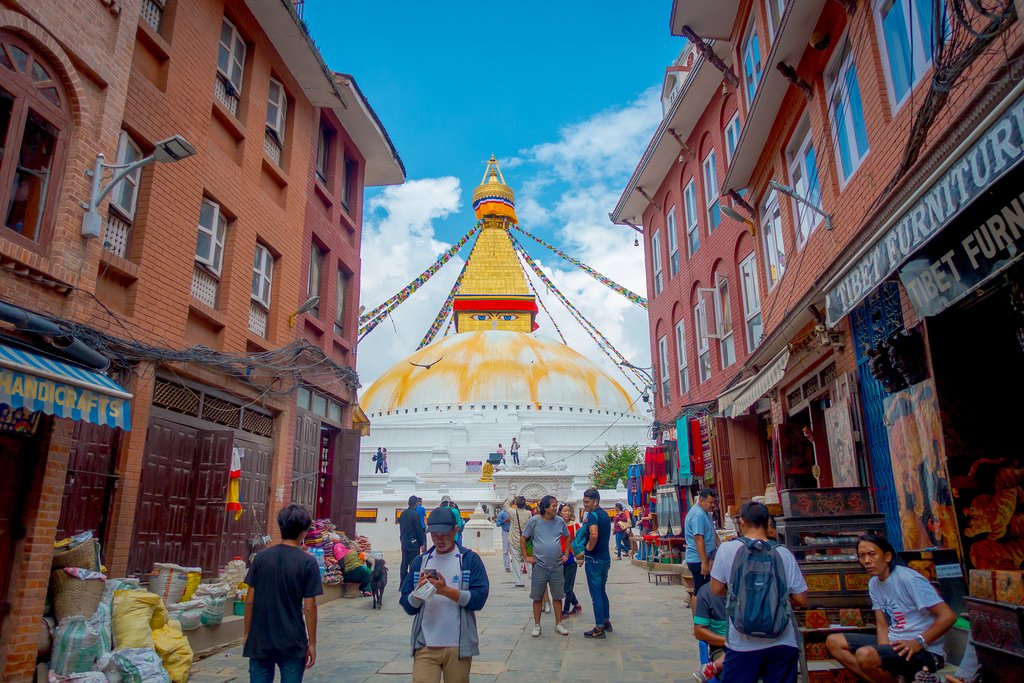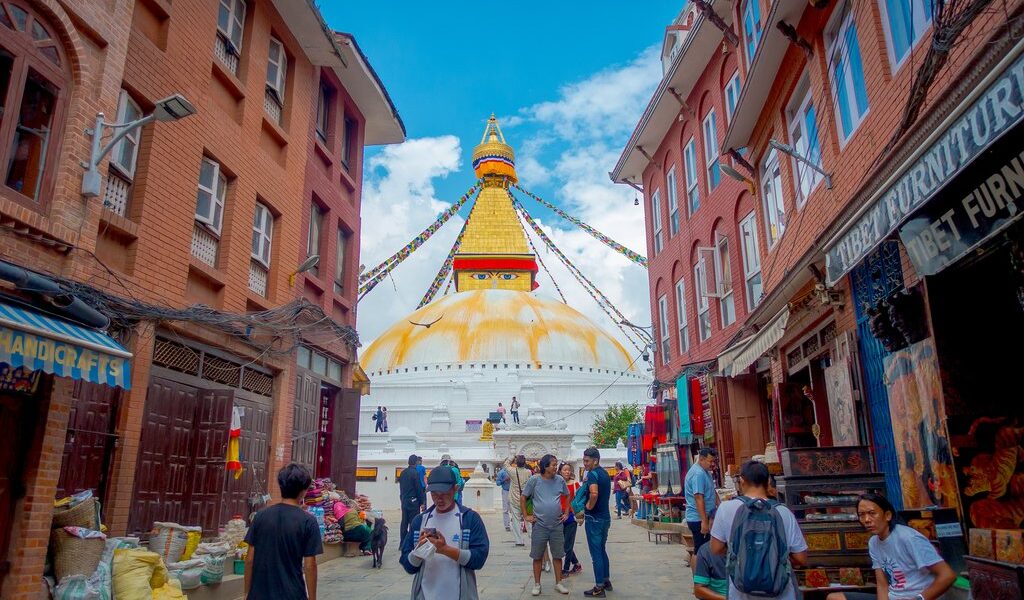
In a city as big and diverse as Kathmandu, it’d be a shame to only visit one or two popular areas. Different neighborhoods here offer diverse experiences: Tibetan culture, Hindu temples, unique accommodation, and so on. Here’s a quick guide to some of the key neighborhoods of Kathmandu.
## Discovering the Diverse Neighborhoods of Kathmandu: A Comprehensive Guide
Kathmandu, a city teeming with life and history, often evokes images of the bustling tourist hub of Thamel in the minds of prospective visitors. However, to truly understand and appreciate the essence of Kathmandu, one must venture beyond the familiar confines of Thamel and explore the diverse tapestry of neighborhoods that comprise this sprawling metropolis. The Kathmandu Valley, a cradle of ancient civilizations, is home to a multitude of distinct neighborhoods, each with its own unique history, character, and cultural identity. Before the relentless march of urbanization blurred the lines, many of these neighborhoods existed as independent entities, some even flourishing as separate kingdoms, each leaving an indelible mark on the city’s rich heritage.
Hidden amidst the urban sprawl are pockets of tranquility, offering boutique accommodation options that provide a respite from the city’s frenetic pace. Other neighborhoods boast captivating sights and exceptional restaurants that are easily overlooked when one’s focus remains solely on the central districts. This comprehensive guide serves as a passport to the lesser-known gems of Kathmandu, revealing the must-know neighborhoods that promise an enriching and unforgettable travel experience.
## Thamel: A Vibrant Melting Pot of Tourism and Local Culture
Thamel, a name synonymous with tourism in Kathmandu, often elicits mixed reactions from seasoned travelers. Some dismiss it as overly commercialized, while others, including trendy young locals, find it to be a vibrant and exciting hub. Regardless of perspective, Thamel’s undeniable allure lies in its concentration of shops, tour operator offices, restaurants, clothing and souvenir shops, and hotels. It is a one-stop destination for travelers seeking to acquire or rent trekking gear, catering to their every conceivable need.
Yet, beneath the veneer of commercialism lies a rich tapestry of history, woven into the fabric of Thamel’s centuries-old heritage structures and traditional Newari buildings. These architectural gems serve as poignant reminders of the neighborhood’s enduring legacy, inviting visitors to delve deeper into its cultural depths.
A significant milestone in Thamel’s evolution has been the recent pedestrianization of its main thoroughfares. This transformative initiative has dramatically improved the pedestrian experience, making it far more comfortable to navigate the area’s bustling streets. Visitors can now leisurely browse the street-side stalls, immersing themselves in the vibrant atmosphere without the constant worry of oncoming traffic. While scooters and certain vehicles are still permitted, requiring a degree of vigilance, the pedestrianization has undeniably elevated Thamel’s appeal, eliciting a sense of joy and appreciation from those who remember its pre-pedestrianized state.
To gain a deeper understanding of Thamel’s multifaceted nature, Nepali author Rabi Thapa’s book, *Thamel: Dark Star of Kathmandu*, offers a thought-provoking exploration of this often-maligned and misunderstood neighborhood. Furthermore, Thamel’s significance is underscored in various articles that delve into Kathmandu’s shopping, dining, and accommodation options. Its central location and many offerings makes it a key location for any visit to Kathmandu.
## Lazimpat: A Serene Oasis Near Thamel
Situated just northeast of Thamel, Lazimpat presents a tranquil contrast to its bustling neighbor. Venturing off Lazimpat Road reveals a district of refined elegance, characterized by Kathmandu’s most upscale residences, attracting a significant population of foreign residents, politicians, and diplomats. Adding to the area’s prominence, the British and Indian embassies are located off Lazimpat Road, as is the CIWEC travel medicine clinic, a vital resource for medical assistance in Kathmandu.
Lazimpat boasts a collection of upscale hotels, including the historic Hotel Shanker, housed within a former palace, and the Radisson. The area also features an array of quality restaurants, coffee shops, and boutiques offering clothing and crafts. Lazimpat presents a compelling alternative to Thamel for those seeking a central location with a less touristy ambiance. While within walking distance of Thamel and Durbar Marg, the journey along the busy, dusty road is not particularly enjoyable. Opting for a taxi or utilizing the green Sajha Yatayat buses that traverse Lazimpat Road along a north-south route is a more comfortable and efficient means of transportation.
## Boudha: A Sanctuary of Tibetan Culture
Boudha stands apart as a distinct enclave within Kathmandu, almost a town in its own right. Centered around the magnificent Boudhanath Stupa, the most revered Tibetan Buddhist site outside of Tibet, Boudha serves as the heart of Kathmandu’s Tibetan community. Here, you’ll encounter shops brimming with Tibetan souvenirs, many of which are skillfully crafted in Nepal, as well as traditional Tibetan culinary delights such as momos and thukpa. The neighborhood is also home to numerous Tibetan monasteries, where monks and devotees engage in their spiritual practices.
Boudha’s allure extends to travelers and long-term foreign residents who come to study the Tibetan language and religion. This influx of international visitors has fostered a cosmopolitan atmosphere, evident in the presence of a charming Taiwanese teahouse overlooking the stupa and one of Kathmandu’s finest Vietnamese restaurants.
Despite its proximity to Pashupatinath, Nepal’s most sacred Hindu temple, Boudha is located a considerable distance from other parts of Kathmandu, a situation exacerbated by persistent roadwork in the area. To fully immerse oneself in the neighborhood’s unique atmosphere, it is highly recommended to spend at least one night in Boudha. The early morning hours and the after-dark ambiance are particularly enchanting, offering a glimpse into the spiritual heart of this vibrant community.
## Patan: The ‘City of Beauty’ Across the Bagmati River
Patan, also known as Lalitpur, the “City of Beauty,” lies south of Kathmandu, across the Bagmati River. While Patan typically refers to the smaller, historic town area, Lalitpur encompasses the larger district. Once an independent kingdom, Patan has retained its distinct culture and character, setting it apart from Kathmandu.
The city boasts a wealth of attractions that warrant a stay of several days. The Patan Durbar Square houses the exceptional Patan Museum, widely regarded as one of the finest museums in South Asia. In close proximity are a number of must-see temples, including the Golden Temple, the Temple of a Thousand Buddhas (Mahaboudha), and the Banglamukhi Temple.
Patan offers a selection of high-quality boutique accommodation options, such as The Inn Patan, Cosy Nepal, and Swotha Traditional Homes. The city is also home to charming craft shops, where visitors can witness local artisans engaged in their traditional crafts, such as carving, metalworking, and religious statue making. These artisans would be pursuing their crafts regardless of tourism, lending the neighborhood an authentic and genuine atmosphere. Patan is not a mere museum of culture; it is a living, breathing embodiment of culture as practiced by the local Newari people.
## Jawalakhel/ Jhamsikhel/ Sanepa/ Kupondole: Modernity and Expatriate Life
The contiguous neighborhoods of Jawalakhel, Jhamsikhel, Sanepa, and Kupondole, situated just west of old Patan, form part of the greater Patan or Lalitpur area. However, these neighborhoods possess a markedly different ambiance, characterized by a scarcity of old buildings and an abundance of modern, upscale residences.
While not primarily tourist destinations, these neighborhoods are home to a significant proportion of Kathmandu’s foreign residents, largely due to the presence of the United Nations Headquarters on Pulchowk Road. This has resulted in a proliferation of longer-term accommodation rentals, a diverse array of international and Nepali restaurants and cafes, fashionable boutiques, art galleries, supermarkets, and a selection of nightlife venues and co-working spaces. Not to be overlooked are Kathmandu’s premier shopping mall, the Labim Mall, and the captivating street art in Kupondole.
For those with limited time in Kathmandu, these neighborhoods may not be a priority. However, for longer stays, for those wishing to connect with the expatriate community, or for those simply seeking familiar comforts such as an air-conditioned movie theater, these neighborhoods offer a welcome respite.
## Thapathali: A Refined Destination for Dining and Shopping
Thapathali, a riverside suburb with a concentration of government departments, offers one compelling reason to visit: Baber Mahal Revisited. This complex, housed within a meticulously renovated late 19th/early 20th-century palace, the Baber Mahal, is home to a curated collection of Kathmandu’s most exclusive boutiques and restaurants.
The ever-popular Chez Caroline French restaurant is well worth a visit, offering a culinary experience that is expensive by Kathmandu standards but reasonable when compared to international French cuisine. The complex also houses the elegant boutique hotel, 3 Rooms by Pauline, offering a unique blend of homely and palatial accommodations. Art enthusiasts will appreciate the presence of the Siddhartha Art Gallery, one of Kathmandu’s leading modern art galleries.
## Budhanilkantha: Gateway to Shivapuri National Park
Located on the northern fringes of the Kathmandu Valley, at the base of the Shivapuri National Park, Budhanilkantha is primarily a local residential area. However, it is also home to the Shivapuri Heights Cottages, a highly recommended mid-range accommodation option.
Run by the hospitable British-Nepali couple Steve and Neeru, each cottage is individually decorated and furnished, the home-cooked meals are delectable, and a terrace offers breathtaking views of the city. Guests can also enjoy a plunge pool and spa facilities. A stay at the Shivapuri Heights Cottages provides opportunities to explore the national park, visit a nearby monastery, and marvel at the renowned Budhanilkantha Temple, featuring an extraordinary statue of the Hindu god Vishnu reclining in a pool of water, surrounded by snakes.
## Bhaktapur: Pottery and Pagodas Beyond Kathmandu
Like Patan, Bhaktapur transcends the definition of a mere neighborhood of Kathmandu. It is a distinct town, once an independent kingdom, with a character that differs significantly from other parts of the city. Situated further from central Kathmandu, Bhaktapur is not yet fully integrated into the urban sprawl. This ancient Newari town boasts a stunning Durbar Square and the multi-tiered pagoda, Nayatapola Temple. Bhaktapur is also renowned for its exquisite handicrafts, particularly pottery, which can be seen drying in the sun after being skillfully crafted by hand.
Bhaktapur suffered considerable damage during the 2015 earthquake, and the Durbar Square, while still impressive, feels somewhat less vibrant than its counterpart in Patan. Nevertheless, Bhaktapur remains a worthwhile destination, offering a unique glimpse into the architecture and culture of the region.
Located approximately 10 miles from Kathmandu, Bhaktapur is best experienced with an overnight stay, allowing visitors to savor the town’s atmosphere after the day-trippers have departed. Furthermore, Bhaktapur serves as a convenient starting point for numerous scenic hikes around the valley.
B-1723

